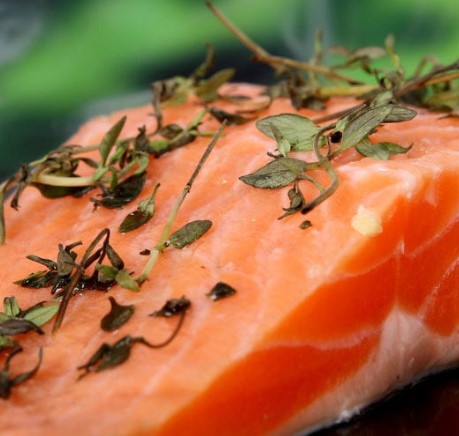Antibiotics in fish: what you need to know

Photo is illustrative in nature. From open sources.
Fish is one of the healthiest and most nutritious foods we can eat. However, like meat , fish may containantibiotics that have been used to prevent and treat infections in animals.
Why are antibiotics used in fish farming?
Fish farming is a complex and responsible process that requires constant monitoring of fish health. As with animals, fish can develop various infections that can lead to serious consequences. Antibiotics may be used to prevent and treat these infections.
How can antibiotics get into fish?
Antibiotics can get into fish in several ways. First, they can be added to the feed that is used to feed the fish. Secondly, they can be added to the water where the fish are kept. Third, antibiotics can be injected directly into the body of the fish through injections or other methods.
What problems can arise from the consumption of fish containing antibiotics?
Consumption of fish containing antibiotics can lead to various problems. Firstly, it can cause allergic reactions in people who eat such fish. Secondly, it can contribute to the development of antibiotic resistance in bacteria, which can lead to serious consequences for human health.
What can be done to avoid problems with antibiotics in fish?
To avoid problems with antibiotics in fish, you need to choose products from reliable manufacturers that do not use antibiotics in their work. Also, it is worth paying attention to the place of origin of the fish and the conditions of its storage. Finally, fish must be properly cooked to kill any bacteria and viruses it may contain.
In conclusion, antibiotics in fish are a serious problem that can affect human health . To avoid problems with antibiotics in fish, you need to choose products from reliable manufacturers and properly prepare the fish before eating.
Read together with it:
- My parents' behavior during quarantine made my husband angryWhen my whole family found themselves in self-isolation, I was somewhat happy. There was never enough time to rest,communication with children. And household chores have piled up.Once the shock of fear of the coronavirus had worn off a bit, we enjoyed doing nothing. But the idyll didn't last long, a...
- My mother ruined my wedding with her resentmentFor several years nowMom can'tforgive me for one story that happened at my wedding.From my point of view, I am not guilty of anything. But you can't convince my mother. And here's what happened.My husband and I met in my hometown, where he worked. We decided to have our wedding in his home village.I...
- My granddaughter's bad parentsMyThe son and his wife lived for only two years. However, they managed to have a child, whom heThe wife took it for herself after the divorce. The granddaughter was only one year old at the time.The divorce was difficult, in court they voiced a banal reason - "their personalities did not get along"....
- My husband reproaches me for being on maternity leaveMy husband openly reproaches me for being on maternity leave. The initiative to have a child was entirely his. He was initially looking for a woman to start a family, have children with, and he found me. Already in the first year of marriage he was worried that there were no children for a long time...
- I betrayed my friend and I don’t know how to make amendsBetrayed a close friend, one might even say a kindred spirit. Her name is Vika.We met in the 6th grade (I transferred to another school). At first I didn't really like her, and she didn't like me either, but gradually we got closer and by the 8th grade we were already getting along great, and by the...
- Linda the dogMy grandmother had a Pekingese named Linda. My aunt gave the dog to my grandmother. In short, Linda was given away almost for nothing. She had a hernia and a slightly displaced rib.Ever since I was a child, I loved visiting my grandmother and playing with Lindochka. The dog had a passion - candy, as...
- My husband is losing money and I am paying his loansI am 28 years old, my husband is 35. We have three children - 2 boys and a younger daughter. The eldest son is four years old, the middle one is two, the youngest will be 2 months old.The husband plays slot machines and spends all his earnings theremoney . I'm responsible for his loans, which I took...
- If your mother-in-law is an energy vampireI ask for advice and help in communicating with my motherhusband . She is a good person, she hasn't done anything bad to me. She has never offended me, she hasn't gossiped behind my back. But it is very difficult for me to communicate with her, as if she is sucking the strength out of me. She consta...

